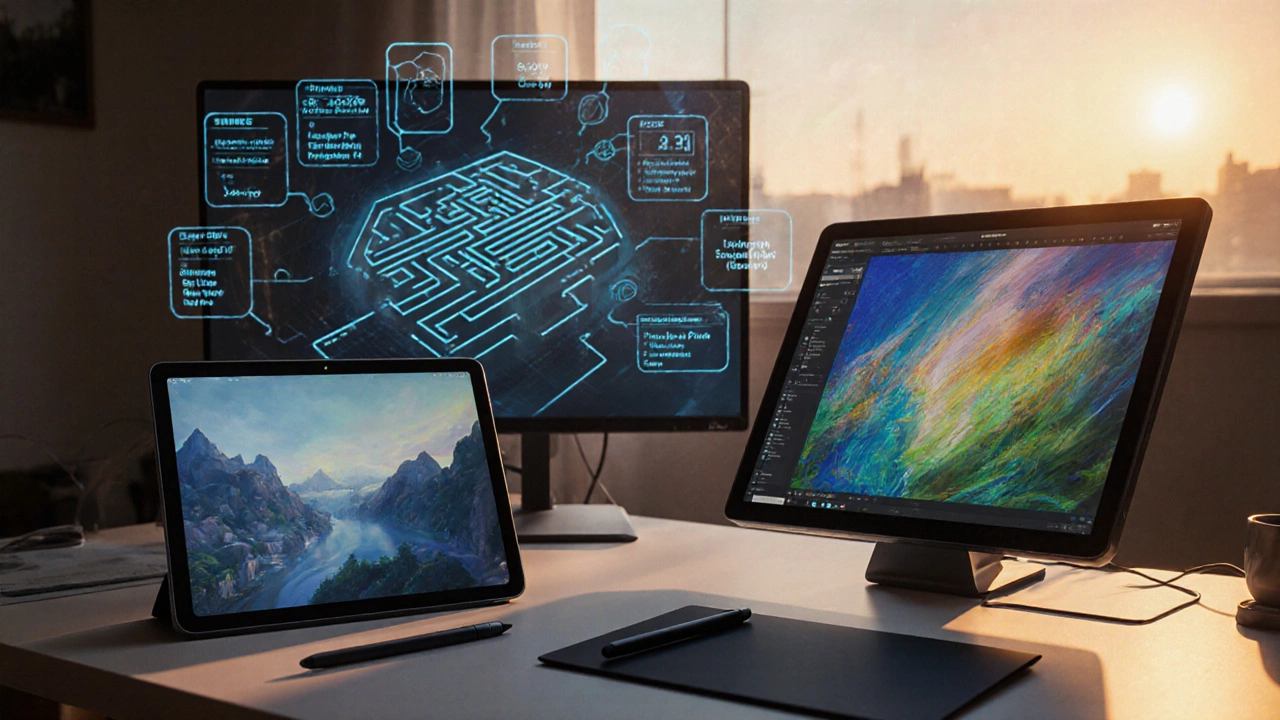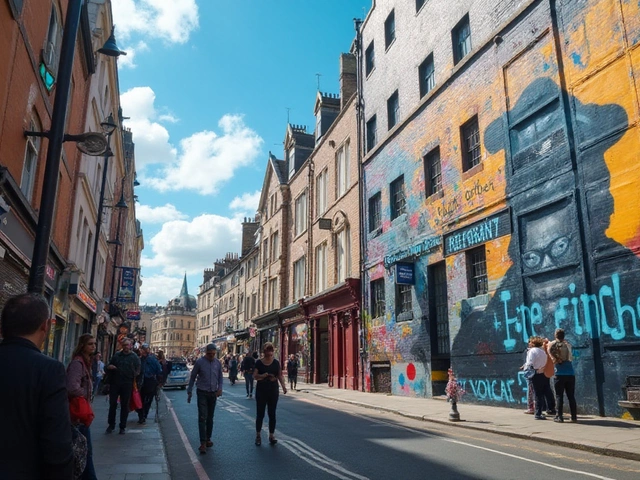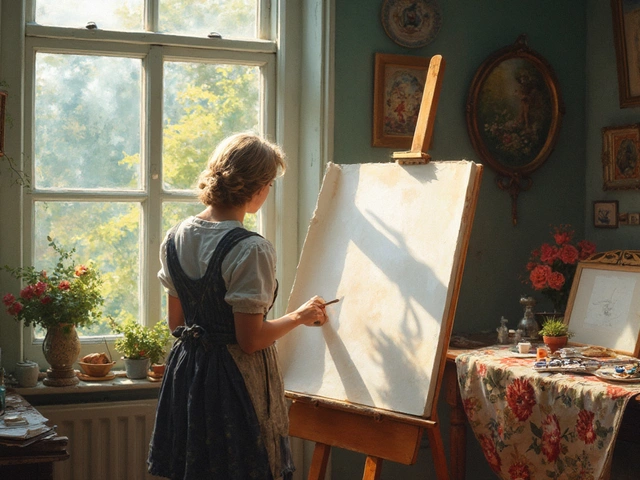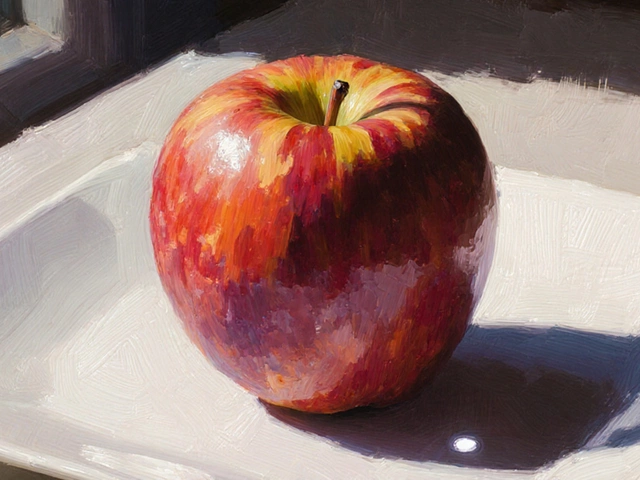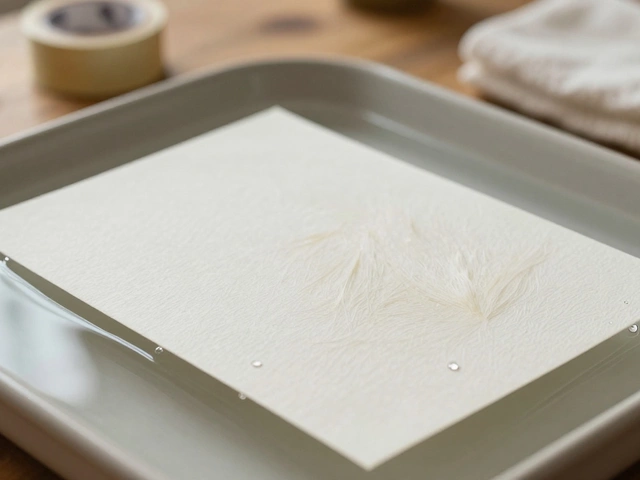Choosing the right tool can feel like a maze of specs, prices, and brand hype. Whether you sketch simple cartoons or render complex concept art, the device you work on shapes every line you draw. This guide cuts through the noise, shows what matters, and points you to the top performers for 2025.
Key Takeaways
- Screen size and color accuracy matter most for professional work.
- Pressure sensitivity of 8192 levels is now the baseline for high‑end tablets.
- If you need portability, an iPad Pro with Apple Pencil is hard to beat.
- For a true desktop experience, a Wacom Cintiq or large‑format LCD tablet delivers the most natural feel.
- Budget‑friendly options like XP‑Pen Artist and Huion Kamvas offer solid performance without breaking the bank.
How to Pick the Right Digital Art Device
Before you start comparing models, ask yourself these questions:
- Do you work primarily in a studio or on the go?
- What software do you use (Photoshop, Procreate, Clip Studio Paint, Blender)?
- Is a built‑in screen a must, or can you live with a separate monitor?
- How important are pen features like tilt, rotation, and shortcut buttons?
- What’s your budget ceiling?
Answering them narrows the field to three core categories: standalone tablets with screens, detachable Windows tablets, and iPad‑based solutions.
Top Devices for Digital Artists in 2025
The market has settled around a handful of models that consistently score high on performance, ergonomics, and support.
- Digital drawing tablet is a hardware device that captures pen input and translates it into digital brush strokes. Modern versions feature high‑resolution LCD screens, 8192 pressure levels, and low latency.
- iPad Pro 12.9" is Apple’s flagship tablet, praised for its Liquid Retina XDR display and seamless integration with Apple Pencil (2nd gen). It runs iPadOS, which hosts Procreate, Affinity Designer, and other creative apps.
- Microsoft Surface Pro 9 combines a full‑Windows PC with a detachable tablet, supporting the Surface Pen (4096 pressure levels). It runs desktop‑grade software like Photoshop and Clip Studio Paint without emulation.
- Wacom Cintiq 27 is a large 4K pen display that offers a true desktop feel. It works with any Windows or macOS art program and includes ExpressKey shortcuts for workflow speed.
- XP‑Pen Artist Pro 16 delivers a sleek, budget‑friendly pen display with 8192 pressure sensitivity and a laminated screen to reduce parallax.
- Huion Kamvas Pro 24 provides a 23.8" 2.5K screen, strong color accuracy (96% Adobe RGB), and an ergonomic stand at a mid‑range price.
- Gaomon PD1560 is a compact 15.6" pen display that’s ideal for beginners looking for a portable screen solution.
- Apple Pencil is a pressure‑sensitive stylus designed for iPad models. The 2nd gen version supports magnetic charging, double‑tap shortcut, and 8192 pressure levels.
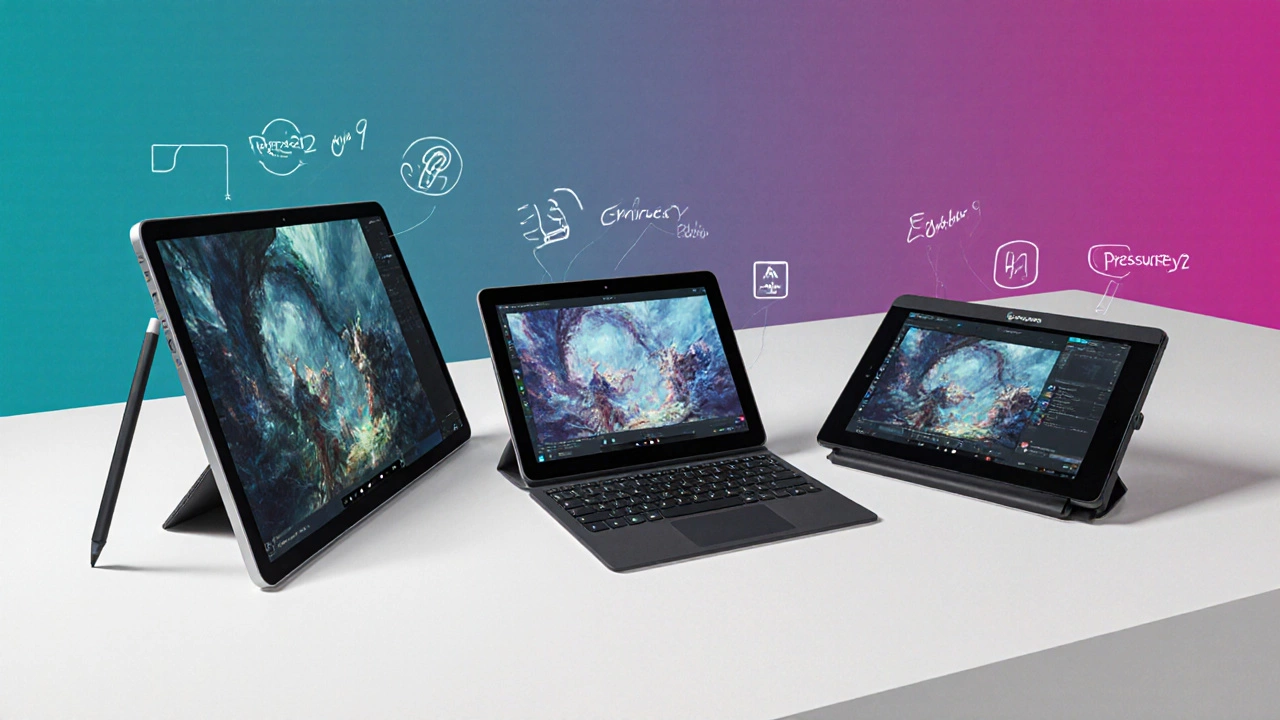
Device Deep Dives
iPad Pro 12.9" with Apple Pencil
The iPad Pro’s 12.9" Liquid Retina XDR display delivers 2732 × 2048 resolution and a 120 Hz refresh rate, making line work feel buttery smooth. Paired with the Apple Pencil, you get 8192 pressure levels, tilt detection, and virtually no lag. Procreate’s intuitive UI and the ability to run multiple apps side‑by‑side make it a favorite for illustrators on the move.
Pros: ultra‑portable, excellent battery life (up to 10 hours), massive app ecosystem.
Cons: higher cost for accessories, limited to iPadOS apps.
Microsoft Surface Pro 9
Running full Windows 11, the Surface Pro 9 lets you install Photoshop, Krita, or Blender just like a desktop. The 13" PixelSense Flow screen offers 2880 × 1920 resolution and a 120 Hz refresh. The Surface Pen delivers 4096 pressure levels, which is sufficient for most illustration work, though not as granular as the 8192‑level pens on many Wacom models.
Pros: desktop‑grade software, detachable keyboard, versatile hardware.
Cons: battery life drops under heavy workloads, pen feels slightly heavier.
Wacom Cintiq 27
At the high end, the Cintiq 27 provides a 4K (3840 × 2160) laminated display with 99% Adobe RGB coverage. Its pen supports 8192 pressure levels, tilt, and customizable ExpressKeys. Because it’s a pen‑only device, you’ll need a separate computer, but the natural drawing feel rivals paper.
Pros: massive screen, industry‑standard color accuracy, extensive shortcut support.
Cons: expensive, requires a powerful host PC, not portable.
XP‑Pen Artist Pro 16
This mid‑range option packs a 15.6" fully‑laminated screen with 8192 pressure levels and 120 Hz refresh. The pen includes 8 shortcut keys and tilt support. It’s compatible with Windows and macOS, making it a solid choice for artists who want a screen without the premium price tag.
Pros: affordable, good color fidelity, low latency.
Cons: stand is basic, occasional driver quirks on macOS.
Huion Kamvas Pro 24
Huion steps up with a 23.8" 2.5K display and 96% Adobe RGB coverage. The pen offers 8192 pressure levels and 8192‑level tilt. It ships with an ergonomic stand that can be adjusted to multiple angles, which is helpful for long drawing sessions.
Pros: large screen for detail work, strong color performance, competitive price.
Cons: heavier than smaller tablets, cable management can be messy.
Side‑by‑Side Comparison
| Device | Screen Size | Resolution | Pressure Levels | Operating System | Price (USD) |
|---|---|---|---|---|---|
| Wacom Cintiq 27 | 27" (4K) | 3840 × 2160 | 8192 | Windows/macOS (host) | ≈ $2,300 |
| iPad Pro 12.9" + Apple Pencil | 12.9" (Liquid Retina XDR) | 2732 × 2048 | 8192 | iPadOS | ≈ $1,300 (incl. Pencil) |
| Microsoft Surface Pro 9 | 13" (PixelSense Flow) | 2880 × 1920 | 4096 | Windows 11 | ≈ $1,500 (incl. Pen) |
| XP‑Pen Artist Pro 16 | 15.6" (Full HD) | 1920 × 1080 | 8192 | Windows/macOS | ≈ $550 |
| Huion Kamvas Pro 24 | 23.8" (2.5K) | 2560 × 1440 | 8192 | Windows/macOS | ≈ $900 |
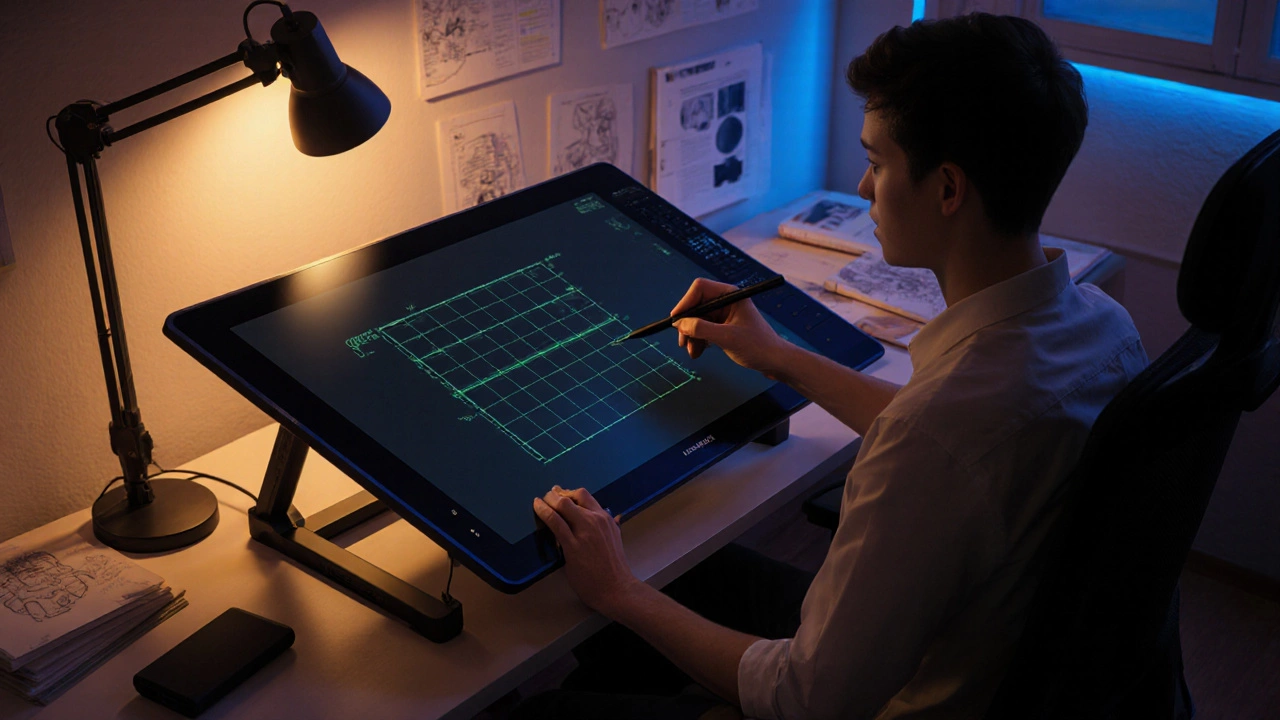
Pro Tips & Common Pitfalls
Even the best hardware can underperform if you ignore a few practical steps:
- Calibrate your pen regularly. Most tablets let you map the tip to the exact screen area, which removes drift.
- Use a matte screen protector on glossy displays to reduce glare and improve pencil glide.
- Keep drivers up to date. Manufacturers release performance patches that cut latency by up to 30%.
- If you share a workspace, consider a portable stand to keep the device at ergonomic height; poor posture leads to fatigue.
- Don’t forget backup power. A small USB‑C power bank can keep a Surface or iPad alive during long field sketches.
By following these habits, you’ll get the most out of whichever best drawing tablet you choose.
Frequently Asked Questions
What is the main difference between a pen display and a regular graphics tablet?
A pen display lets you draw directly on the screen, mimicking paper. A regular tablet requires a separate monitor; you draw on the tablet surface while looking at the monitor.
Is the iPad Pro a good choice for 3D modeling?
For lightweight sketching of 3D concepts, yes. Apps like Shapr3D run natively on iPadOS and support the Apple Pencil. For heavy sculpting or rendering, a full‑featured PC with a dedicated GPU is still preferable.
How important is color accuracy for illustration?
If your work ends up in print or on branded media, aim for at least 90% Adobe RGB coverage. Devices like the Wacom Cintiq 27 and Huion Kamvas Pro 24 meet that mark.
Can I use a Windows pen tablet on macOS?
Most modern tablets provide cross‑platform drivers, so an XP‑Pen or Wacom pen display works on macOS. Just install the Mac driver from the manufacturer’s website.
Do I really need 8192 pressure levels?
8192 levels give you finer control for subtle shading and brush dynamics. If you mainly do line art or comic‑style work, 4096 levels are often sufficient, but many artists prefer the extra headroom for realism.
